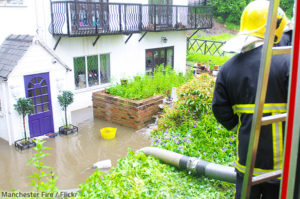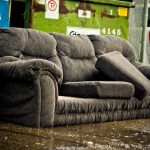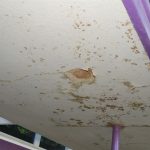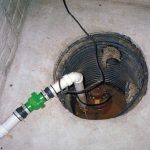Water damage on its own is an emergency disaster that requires immediate attention. However, when the water damage involves sewage water, there is even more that you need to be worried about.
When water damages your property, any porous building materials and furnishings absorb the excess water and moisture. However, when the water is contaminated with sewage, then the materials also absorb the harmful contents of the sewage water. Because of this, they suffer even more harm as damage comes from both the water and the sewage.
Knowing this, you will need to take immediate action if your home or business suffers water damage from sewer water.
Use the following information to help you figure out how to go about sewage cleaning:
1. Be Safe
While it is important to take immediate action in the aftermath of sewage water damage, it is more important that you are safe. That said, make sure you are equipped with protective gear prior to doing any work. You should wear a facemask, protective eyewear, rubber gloves, and rubber boots.
You also do not want your skin to come into direct contact with the contaminated water. Therefore, make sure you are wearing clothing that fully covers up your skin.
Furthermore, you will want to shut off your utilities. If the water is not too deep, and you can safely do this yourself, then do so while wearing the necessary protective gear. Otherwise, contact your utility companies to ask them to shut off your water, gas, and electricity.

2. Extract the Water
Once you have the proper protection, you can begin the cleaning process. Start by extracting the standing water from your property. You may add small portions of chlorine bleach to the standing water. This will provide some disinfection, as well as prevent the spread of bacteria.
If the amount of water present is shallow enough, then you can remove the water using a wet-dry vacuum. If the water is deep, then use a pump to extract the water. If you do not already own one, you can rent a pump at most home improvement stores. Otherwise, you can opt for the old-fashioned bucket method.
Any dirt and debris that remains should be gathered, placed into a garbage bag, and disposed of right away.
3. Remove Saturated Items
Any items that have been soaked by sewage water, including flooring, should be immediately thrown out. Not only because they have suffered damage by the water, but also because they were damaged by the sewage and its contaminants. For this reason, they are hazardous and unsafe to keep.
Furthermore, move any unaffected items out of the area. You already have a lot of damage and cleanup to deal with, so you want any safe items out of the way to protect them from damage.
4. Clean and Sanitize the Property
Use bacterial disinfectants, cleaning products and solutions, and hot water to wash down all surfaces, floors, and walls that were affected by the sewage water. These materials absorb water and the contaminants from the sewage, so you want to disinfect them promptly. Afterwards, do another round of cleaning using water and a household detergent.
When cleaning the floor, you want to be more thorough. You should use a brush to scrub the floor down with a combination of four parts water and one-part chlorine bleach. Then, rinse off the solution with clean water.

5. Dry the Property
Wipe down and remove any remaining water. Allow the area to dry by opening windows. You should also use dehumidifiers and electric fans to help. This is a crucial step in the cleanup process, because you want to limit the potential for mold growth.
If you do find mold, then use mold cleaners to kill the spores and disinfect adjacent surfaces. If a significant amount of mold has grown, then you should immediately contact a professional to handle the mold removal and cleanup. Mold will cause damage in addition to the sewage water damage, along with possible health issues.
6. Sort and Discard Other Contaminated Contents
You should sort through any remaining belongings you have.
Throw out any porous items, food, and drinks that came into direct contact with the sewage water. Clothes, linens, furniture, and other items that made minimal contact with the sewage water should be thoroughly cleaned.
Use antibacterial cleaning products on surfaces. Also, wash clothes and linens in a solution of chlorine bleach and water. Furniture and appliances are best cleaned by professionals.
7. Get Professional Help
Whether your property is experiencing sewage water damage due to a sewage backup, or another disaster, it is important that sewage cleaning is conducted promptly. Generally speaking, professional help from a water damage restoration service is always your best bet.
There are certain situations where professional help is a must. For instance, if the sewage water has affected more than one area. Also, if more than 24 hours have passed since the flooding occurred.
Professional technicians have the necessary knowledge, training, and equipment to perform the job in a safe, efficient manner. Professional help also means you do not need to risk your or your family’s safety to conduct cleanup. So even if professional sewage cleaning is not required, it guarantees that your property is fully restored and safe to return to following sewage water damage.




